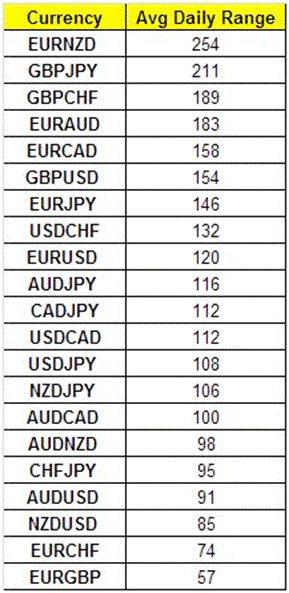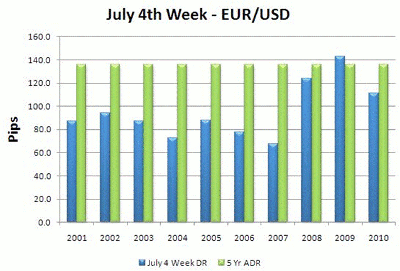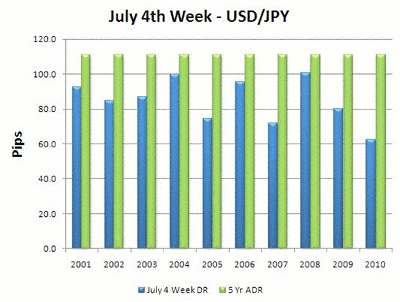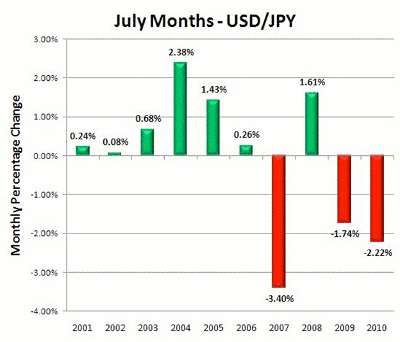While seasonal trends aren’t as reliable this time of year, important data releases and central bank meetings in the US and abroad are likely to drive price action in world currency markets this month.
The dog days of summer are here, but as we saw last year, July is not always a quiet month in the foreign exchange market. In July 2010, the EUR/USD rose more than 900 pips, but then again, 2010 was an unusually volatile year for the euro.
It is difficult to say whether this volatility will be repeated in 2011, but there are certainly enough event risks to cause an increase in volatility if things go the wrong way.
Here are the key dates in July with some US data included:
Key Dates in July
July 7: European Central Bank (ECB) meetingJuly 8: US non-farm payrolls report
July 13: Bernanke’s semi-annual testimony on the economy and monetary policy
July 11-12: EU finance ministers meet to talk about Greece
July 15: Release of European bank stress test results
July 16: EU central bankers meet again, and in all likelihood, the discussions will center around the stress test results
As shown in the charts below, the average daily range during the July 4th holiday week in EUR/USD and USD/JPY is lower than the usual five-year average daily trading range for these currency pairs. However, in the past three years, the volatility in the EUR/USD has come very close to average levels.
This means that volatility can pick up once the holiday is over, and with the number of significant event risks this week, we wouldn’t be surprised if that was the case in 2011 as well.
In addition to the Reserve Bank of Australia (RBA), ECB, and Bank of England (BOE) meetings, non-farm payrolls are also scheduled for release along with Australian and Canadian employment numbers, which are all very market-moving data reports for the respective currencies.
NEXT: Watch for Seasonal Patterns in USD/JPY
|pagebreak|Every month we like to look for any signs of seasonality, and in July, the only case of seasonality is in USD/JPY. Over the past ten years, USD/JPY appreciated in seven out of the ten years. Unfortunately, seasonality did not accurately predict the direction of USD/JPY in three out of the last four years, and so we caution traders against relying too heavily on this information.
Finally, many of our traders have requested an update to our average daily trading range list. The following table shows the average daily trading range for each of the major currencies for the past ten years. The range is measured in pips, and as you can see, EUR/NZD and GBP/JPY are the most volatile on an intraday basis, with EUR/GBP and EUR/CHF being the least volatile.

This information is particularly useful when trying to decide where to place stops. For example, a 30-pip stop in EUR/GBP is far more significant than a 30-pip stop in EUR/NZD.
By Kathy Lien of KathyLien.com
























